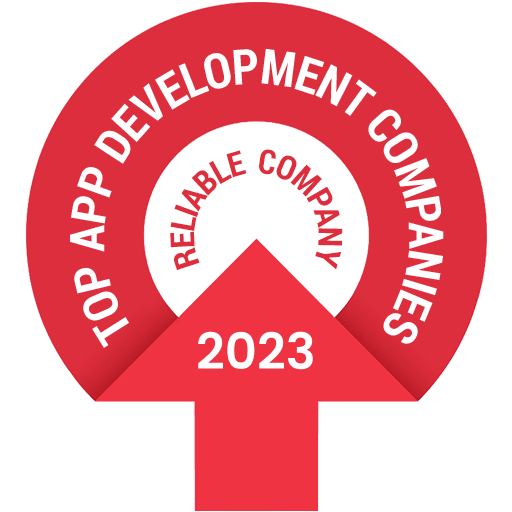.jpg)
Native vs Cross-Platform Apps: Which One Should You Pick
- By Daniyal Shakeel
- 18-09-2025
- Mobile App Development
Deciding between native and cross-platform app development comes down to performance, cost, and launch speed.
Native apps deliver top performance and seamless device integration, while cross-platform apps reduce development time and expenses by using one codebase for multiple platforms.
This guide compares both approaches to help you choose the right one for your business goals.
What Are Native and Cross-Platform Apps?
Before you can decide which direction to take, it helps to understand what sets native and cross-platform apps apart. These two approaches differ not just in how they’re built, but also in the experience they deliver to end users.
Native apps are developed specifically for one platform, like iOS or Android. They use platform-approved languages and tools, such as Swift for iOS or Kotlin for Android. Because they’re built directly for a single operating system, native apps can take full advantage of device features like cameras, GPS, sensors, and push notifications. This often results in smoother performance, better security, and a more polished user experience.
Cross-platform apps, on the other hand, are created using a single codebase that works across multiple platforms. Frameworks like Flutter and React Native make this possible by translating shared code into native components. This approach is popular with businesses that want to launch quickly and reach both iOS and Android audiences without doubling development time and costs. While performance may not always match that of a purely native app, the gap has narrowed considerably in recent years.
Here’s a quick comparison of the two approaches:
| Aspect | Native App | Cross-Platform App |
|---|---|---|
| Codebase | Separate for iOS and Android | Single shared codebase |
| Performance | Highest and most consistent | Slightly lower for complex apps |
| Development Time | Longer | Faster |
| Maintenance | Two codebases to manage | Easier with unified updates |
| Cost | Higher overall | Lower overall |
Understanding these basics makes it easier to evaluate which approach will align best with your app’s goals and the experience you want to deliver.
Key Differences Between Native and Cross-Platform Development
Deciding between native and cross-platform development often comes down to how each approach impacts performance, user experience, development speed, and long-term scalability. Below are the core differences that businesses should consider before starting a project.
1. Performance
Native apps deliver the best performance because they’re built for a single operating system, making them faster and more reliable. Cross-platform apps have improved over the years, but in graphics-heavy or real-time scenarios, they may still lag slightly. In markets like New York, Chicago, and Miami, factors such as user demand, budget, and platform preference often influence whether businesses choose native or cross-platform, with a mobile app development company in Miami helping to evaluate which option makes the most sense.
2. User Experience (UX)
With native development, designers and developers can create interfaces that feel completely natural to the platform. This means following Apple’s Human Interface Guidelines for iOS and Google’s Material Design for Android. Cross-platform apps can achieve a similar experience, but there’s a risk of certain elements feeling generic if not customized carefully.
3. Development Time
Cross-platform frameworks like Flutter and React Native are designed to save time by allowing a single codebase to run on multiple platforms. This can speed up launch timelines, making them ideal for startups or businesses that need to release an MVP quickly. Native apps, on the other hand, require separate development for each platform, which takes longer.
4. Maintenance and Updates
Managing updates is simpler with cross-platform development because changes can be applied to both platforms at once. Native apps require updates to be built and tested separately, which can increase ongoing maintenance efforts and costs.
5. Third-Party Integrations
Native apps have a clear advantage when it comes to integrating with device features like cameras, GPS, and push notifications, or when using complex third-party SDKs. While cross-platform frameworks support many integrations, there are instances where workarounds are needed, adding extra time to the development process.
Understanding these differences gives you a clearer picture of how each approach affects your app’s development lifecycle and the experience your users will have once it’s live.
Pros and Cons of Native vs Cross-Platform Development
Every development approach comes with strengths and limitations. By weighing the pros and cons, you can better understand which option aligns with your budget, timeline, and long-term vision for your app.
Native App Pros
- Top-tier performance with smoother animations and faster load times.
- Seamless integration with device hardware like GPS, cameras, and sensors.
- Superior user experience, following platform-specific design standards.
- Enhanced security, as apps are built using official languages and frameworks.
- Better scalability for apps expected to grow and add complex features.
Native App Cons
- Higher development costs due to separate teams for iOS and Android.
- Longer development timeline because each platform requires its own build.
- More maintenance work with updates handled separately for each platform.
Cross-Platform App Pros
- Single codebase works across multiple platforms, saving development time.
- Lower costs overall, making it ideal for startups and smaller businesses.
- Faster time-to-market with simultaneous iOS and Android launches.
- Easier updates and maintenance, as changes apply to both platforms at once.
- Broad audience reach, delivering to iOS and Android users together.
Cross-Platform App Cons
- Slightly lower performance, especially for highly complex or graphics-heavy apps.
- Limited access to certain platform-specific features without extra customization.
- Potential UI inconsistencies if design guidelines are not carefully implemented.
- Dependence on third-party frameworks, which may have occasional compatibility issues.
Balancing these factors helps clarify which option will serve your goals best. If top performance and deep hardware integration are critical, native development usually wins. If speed, affordability, and wide reach matter more, cross-platform development is often the smarter move.
Cost Comparison Between Native and Cross-Platform Development
Cost plays a major role in deciding whether to build your app using a native or cross-platform approach. The budget needed can vary greatly depending on your app’s complexity, required features, and the development team you hire.
When building native apps, you’ll need separate teams or developers for iOS and Android. This effectively doubles the amount of work because each platform requires its own codebase, testing, and maintenance cycle. While this leads to higher performance and quality, it also raises costs significantly.
With cross-platform apps, a single codebase serves both platforms. This reduces the development workload and speeds up the process, which often results in a lower initial investment. However, if you need to implement platform-specific features or fix framework limitations, additional work may add to the budget.
Developer rates also vary depending on location. For instance, building an app through teams based in cities like San Francisco or New York can be more expensive compared to hiring talent from places like Austin or Dallas, where working with a mobile app development company in Dallas can sometimes offer a more cost-effective option.
Other factors that influence cost include:
- Feature complexity – More advanced features such as AR, AI, or real-time chat require more development time.
- Design requirements – Custom animations and highly polished interfaces add extra hours.
- Developer location – Rates vary widely between regions like the US, Europe, and Asia.
- Maintenance needs – Ongoing updates, bug fixes, and OS upgrades affect long-term costs.
Here’s a general estimate of what you might expect to spend:
| Type | Simple App | Medium Complexity | Complex App |
|---|---|---|---|
| Native | $25,000 – $60,000 | $60,000 – $120,000 | $120,000 – $250,000+ |
| Cross-Platform | $15,000 – $40,000 | $40,000 – $80,000 | $80,000 – $150,000 |
While cross-platform development usually offers a cost advantage upfront, native development can provide a better long-term return if your app demands high performance or frequent feature expansions. The key is balancing your budget with your growth plans and user expectations.
When to Choose Native Development
Native development isn’t always the most budget-friendly choice, but there are clear scenarios where it’s the smarter long-term investment. If your app depends heavily on performance, security, or specialized features, building separately for iOS and Android can deliver a smoother experience and reduce technical limitations.
Here are situations where going native makes the most sense:
- High-performance requirements: Apps like mobile games, AR/VR platforms, and financial tools that demand speed and reliability benefit from native optimization.
- Heavy use of device hardware: If your app relies on complex features such as GPS, Bluetooth, advanced camera controls, or motion sensors, native development ensures seamless integration.
- Strict security and compliance needs: Healthcare, fintech, and enterprise apps that handle sensitive data can leverage native security protocols and platform-level protections.
- Platform-specific UI/UX design: Apps requiring a deeply customized user interface that follows Apple and Google guidelines will look and feel more natural when built natively.
- Large-scale apps with complex features: As apps grow, having separate codebases can make it easier to scale and introduce unique functionality for each platform.
If your budget and timeline allow, native development positions your app for top-tier performance and a premium user experience. It’s an investment that pays off in scenarios where user satisfaction and reliability are non-negotiable.
When to Choose Cross-Platform Development
Cross-platform development is ideal for businesses looking to move fast, save money, and reach a wider audience without managing two separate codebases. While it may not always match the deep optimization of native development, modern frameworks like Flutter and React Native have closed much of the performance gap, making this approach highly effective for many use cases.
Here are scenarios where cross-platform development is the smarter choice:
- Rapid launch goals: Startups or businesses needing to release an MVP quickly can go live on both iOS and Android at the same time.
- Limited budget: With one team and one codebase, overall development costs are significantly lower than native builds.
- Moderate complexity apps: Apps that don’t require extensive hardware integrations, such as e-commerce, content delivery, or social platforms, work well cross-platform.
- Unified user experience: When the goal is to maintain a consistent look and feel across devices, a single codebase makes it easier to achieve uniformity.
- Simpler maintenance: Updates and bug fixes are applied once and rolled out to both platforms simultaneously, reducing long-term overhead.
- Market testing: Businesses unsure of their target audience can test an idea across multiple platforms without doubling their initial investment.
Cross-platform development is especially appealing for businesses that want speed and efficiency without compromising too much on quality. It’s a practical solution for many companies aiming to balance reach and resources while still delivering a solid user experience.
Choosing the Right Development Framework
Once you’ve decided between native and cross-platform development, the next step is selecting the right tools and frameworks to build your app. The framework you choose directly impacts development speed, scalability, and overall performance.
For native development, each platform has its own dedicated languages and frameworks:
- iOS: Swift and Objective-C, supported by Apple’s Xcode environment.
- Android: Kotlin and Java, managed through Android Studio.
These tools give developers complete control over performance, design, and platform-specific features, which is why native apps tend to feel smoother and more polished.
For cross-platform development, there are several popular frameworks that allow you to write code once and deploy it across multiple platforms:
- Flutter: Backed by Google, known for its fast rendering and flexible UI components.
- React Native: Maintained by Meta, widely used for its strong community support and scalability.
- Xamarin: Powered by Microsoft, ideal for teams already working within the .NET ecosystem.
Flutter and React Native lead the market in 2025, thanks to their speed, stability, and rich libraries of pre-built components. Choosing between them depends on your team’s expertise and the complexity of your app.
The right framework isn’t just about technical preference. It’s about aligning your development process with your business goals, ensuring your app can grow, adapt, and deliver a reliable experience for users over time.
Recent blog
.jpg)
Native vs Cross-Platform Apps: Which One Should You Pick
Mobile App Development | 18-09-2025
AI-Powered Caregiver Matching for Better Home Care in 2025
Artificial Intelligence | 17-09-2025.jpg)




